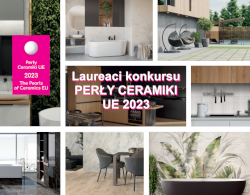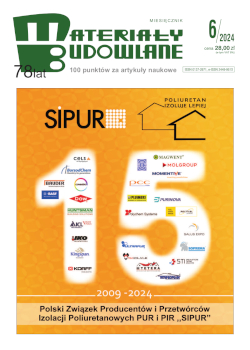dr inż. Michał Piasecki Instytut Techniki Budowlanej, Zakład Fizyki Cieplnej, Akustyki i Środowiska
prof. dr hab. inż. Krystyna Kostyrko Instytut Techniki Budowlanej, Zakład Fizyki Cieplnej, Akustyki i Środowiska
Autor do korespondencji e-mail : Ten adres pocztowy jest chroniony przed spamowaniem. Aby go zobaczyć, konieczne jest włączenie w przeglądarce obsługi JavaScript.
DOI: 10.15199/33.2016.12.10
Jakość środowiska wewnętrznego IEQ (Indoor Environmental Quality) i jej wpływ na samopoczucie i komfort mieszkańców i użytkowników budynku to ważny i aktualny obszar badań. Artykuł przedstawia stan wiedzy oraz metodę określania wskaźnika IEQ opisującego przewidywany komfort użytkowników budynku. Zakres rozpatrywanych zagadnieńwcelu określenia IEQ obejmuje klasy jakości powietrza, komfort cieplny, komfort akustyczny i wizualny w połączeniu z jakością oświetlenia. Na podstawie przeglądu literatury ustalono, że zespoły projektowe budynków powinny uwzględnić parametry dobrego samopoczucia użytkowników budynku już na samym początku procesu projektowania. Wiedza zawarta w artykule może być użyteczna i pomocna dla projektantów, inwestorów, inżynierów, zarządców budynków, użytkowników i konserwatorów urządzeń instalacyjnych, a także dla młodych naukowców, którzy zamierzają podjąć badania nad komfortem użytkowania budynków i może być traktowana jako punkt wyjścia do ukierunkowania dalszych badań. Pomiary wartości parametrów środowiska wewnętrznego są ważnym elementem ocen środowiskowych budynków.
Słowa kluczowe: zrównoważone budownictwo, IEQ, komfort użytkowania, jakość powietrza, komfort cieplny.
* * *
Determination of the quality of the internal environment of the building IEQ
Indoor environment quality IEQ (Indoor Environmental Quality) and the impact on the quality of wellbeing and comfort of the residents and users of the building is a valid and important area of research. The article presents the state of the art and themethod of determining the rate of IEQdescribing the expected comfort of building occupants. The scope of the issues examined in order to determine IEQ includes class air quality, thermal comfort, acoustic comfort and visual combined with the quality of lighting. The literature review found that project teams of buildings should take into account the parameters of the well-being of building occupants from the very beginning of the design process. The knowledge contained in the article can be useful and helpful for designers, investors, engineers, building managers, users and maintenance of equipment installation. The article can also be useful for young scientists who intend to study the comfort of use of buildings and can be considered as a starting point for directing further research.Measurements of parameters of the internal environment is an important element of the environmental assessments of buildings.
Keywords: sustainable building, IEQ, building comfort, indor air quality, thermal comfort.
Literatura:
[1] Altomonte S., S. Schiavon. 2013. „Occupant satisfaction in LEED and non-LEED certified buildings”. Building and Environment 68, 66–76.
[2] Chiang Che-Ming, Chi Ming Lai. 2002. „A study on the comprehensive indicator of indoor environment assessment for occupants’ health inTaiwan”. Building andEnvironment 37, 387 – 392.
[3] Fanger P. Ole. 1970. Thermal Comfort. Analysis and Applications In Environmental Engineering. Danish Technical Press.
[4] Fanger P. Ole, J. Toftum. 2002. „Extension of the PMV model to non-airconditioned buildings in warmclimates”. Energy Build. 34 (6), 533 – 536.
[5] Ghaffarian Amir Hoseini, Nur Dalilah Dahlan, Umberto Berardi, Ali Ghaffarian Hoseini, Nastaran Makaremi, Mahdiar Ghaffarian Hoseini. 2013. „Sustainable energy performances of green buildings: a review of current theories, implementations and challenges”. Renewable Sustainable Energy Rev. 25, 1 – 17.
[6] Madsen Jana. 2014. Acoustics in green buildings: Several green strategies compromise acoustics discover which have the most impact and how to address [Online] http://www.buildings.com/article-details/articleid/10095/title/acoustics-in-green-buildings.aspx (accessed 5.07.15)
[7] NcubeMatiwaza. 2012. The Development of a Methodology for a Tool for Rapid Assessment of Indoor Environment Quality in Office Buildings in the UK. Doctor Thesis. University of Nottingham, UK.
[8] PN-EN 15251:2012 Parametry wejściowe środowiska wewnętrznego dotyczące projektowania i oceny charakterystyki energetycznej budynków, obejmujące jakość powietrza wewnętrznego, środowisko cieplne, oświetlenie i akustykę
[9] Wargocki Paweł, Henrik Nellemose Knudsen, Justyna Krzyżanowska. Some Methodological Aspects of Sensory Testing of Indoor Air Quality. Proceedings: CLIMA2010: 9 – 12: May, Antalya.
Otrzymano : 28.09.2016 r.
Materiały Budowlane 12/2016, str. 30-32 (spis treści >>)



























